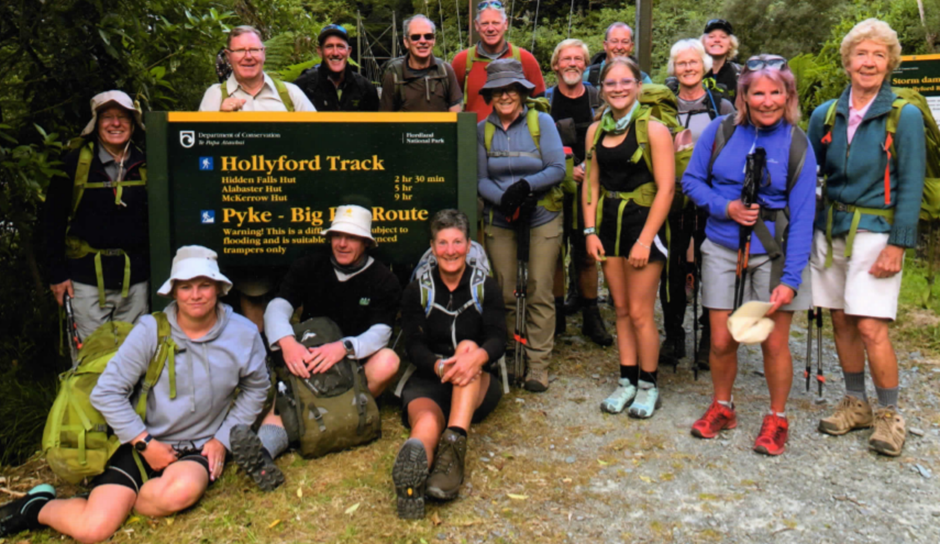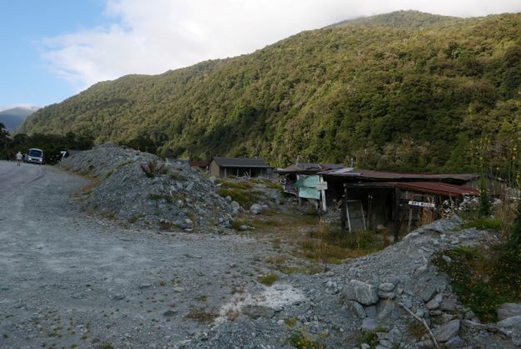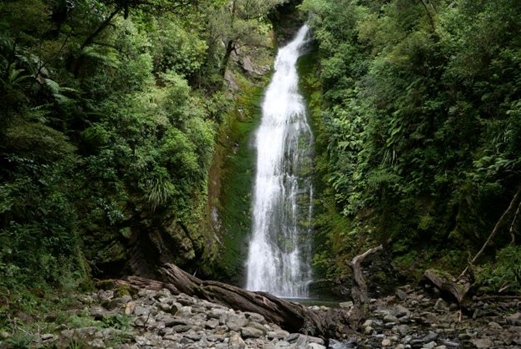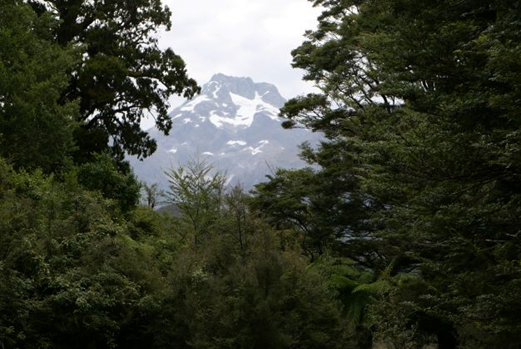
The ‘Hollyford Wilderness Experience’ is a 4-day and 3-night 43-kilometer adventure into the remote Hollyford Valley.


On arrival in Te Anau on Day 1 we attended a comprehensive pre-departure briefing. Here one of our guides, Jack, gives an overview of what to expect and makes sure we have everything that we need for the trip.
Our Day 2 starts with a hearty breakfast before the bus ride on the Milford Sound Road and then into the Hollyford Valley. We also meet our lead guide for the trip, Bard, whose knowledge and passion for this part of NZ is immediately evident. At the road end our walk officially begins. The day is a 19.5km journey carrying our full packs (5 to 7kg) following the Hollyford River until reaching Pyke Lodge at day’s end.
Above the track are Fiordland’s two highest peaks: Mt Tutoko (2746m) and Mt Madeleine (2573m). Tutoko takes its name from the Maori chief who the early Europeans encountered. Tutoko was an important Rangatira of the region where he and his people guarded access into the Hollyford Valley, controlling access into and out of highly valued pounamu gathering areas.
The Hollyford area suffered significant damage when a storm hit the region in February 2020. The fallen trees that litter the river valley and massive avalanches of rock still provide evidence of this extreme weather event.

The track undulates gently through lowland podocarp forest, a mixture of kahikatea, matai and rimu, until we reach the tumbling ‘Hidden Falls’. We continue with a gentle climb over the ‘Little Homer Saddle’ (168m) and then move into tall beech forest with abundant ferns, mosses and lichens. All along the way we stop on a regular basis and our guides share their expertise about the amazing variety of trees, plants and mosses, many of them unique to Fiordland. The track descends to the ‘Little Homer Falls’ (60m) and then continues on to finish the day at Pyke Lodge where the Hollyford and Pyke rivers meet.

Situated near the Pyke Lodge is a plaque that commemorates one of Fiordland’s most famed characters, Davey Gunn. In 1926 he moved to the region from Waimate after securing a lease to establish a cattle farm on 10,000 hectares of remote property at Martins Bay (the finishing point of the Hollyford Track). The guides told many stories about the life and times of Davey Gunn. Legend has it that when Davey was chasing a steer through dense bush he tore his thigh and scrotum on a jagged branch. He stitched up the wound himself with a darning needle and some old fishing gut and jumped back on his horse to continue working!! But it was an act of heroism that cemented his place in history. In 1936, after a light plane crashed into the sea at Big Bay (remote South Westland), he travelled 97km non-stop to get help. He did this in 20 hours when normally this journey would take four days. Four of the six people on board survived and he was awarded the King George VI’s coronation medal in recognition of this amazing feat.
Struggling to make money from farming, he pioneered the idea of guided hiking and horse-trekking trips into the Hollyford and Pyke Valleys. By 1951 he was attracting enough interest to acquire cabins, once used by the men who had built the Hollyford Road, as accommodation for his clients. This became known as Gunn’s Camp and remained in use by hunters and trampers until it was destroyed by an avalanche of rocks, mud and trees in the February 2020 deluge.
He became a popular and well-known figure, respected for his bushcraft and his knowledge of this remote area. The memorial plaque bears the inscription ‘all who passed this way knew him as Davey, the Trampers Friend’.
After enjoying hot showers we finished the day with an impressive 3 course meal that included wild venison.
To be continued.